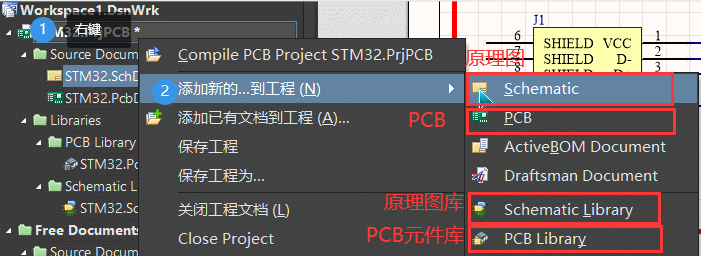
Why Multiple Boards?Īs mentioned above, splitting your hardware into multiple boards is a common strategy to solve a wide range of challenges in designs. It’s open source, and free to use - however comes with no warranty or guarantee under the MIT license. If this board was placed on a development kit that has network connectivity (wired or wireless) it could easily store data in a database, or be monitored remotely.Īs with my other projects, you’ll find the design files for this project on my GitHub.

This shield would be perfect for accurately monitoring the environment within a home, lab, or industrial environment. We’ll also have an LCD display to show the current values. It will feature a high-precision digital relative humidity/temperature sensor and a high-precision digital pressure sensor. EnviroShield Projectįor this article, we’re building a relatively simple weather station. Altium’s Multi-board capabilities help alleviate these challenges by giving engineers the tools to mate their hardware together in the design environment, confirming electrical signals and mechanical connectors are aligned and compatible before committing to ordering boards. Creating hardware with multiple boards is very common and can offer technical challenges to engineers working with them. This however is not the only use for sub-boards in the electronics industry. This can allow us to flesh out requirements and determine which microcontroller board deisgn is optimal for our application, allowing us to rapidly prototype to evaluate microcontrollers with a wide range of capabilities across a broad price range.

This also allows us to determine real-world processor requirements our implementation has, by using a standard form factor we can switch between a large range of microcontrollers from various manufacturers without needing to create multiple boards. By prototyping on a development kit, we can prove our design without worrying about the implementation of the microcontroller, power, or communications. In this article, we’re going to build a shield for an STMicroelectronics Nucleo development board, though as it is only using the Arduino compatible headers, it would be usable on any development board featuring Arduino-style headers.


 0 kommentar(er)
0 kommentar(er)
